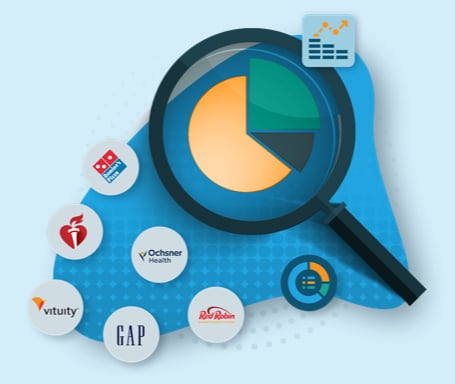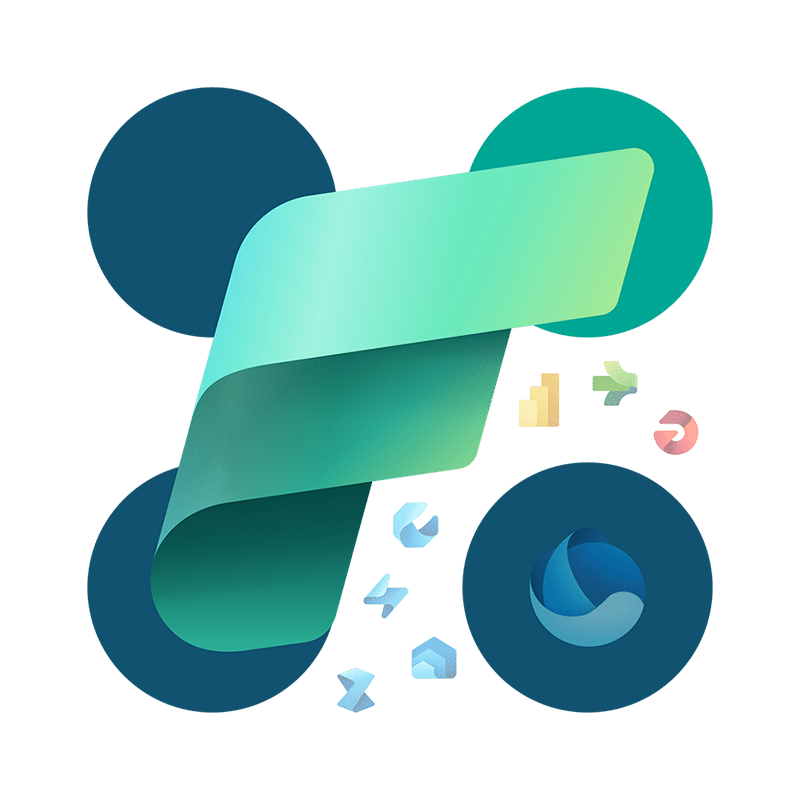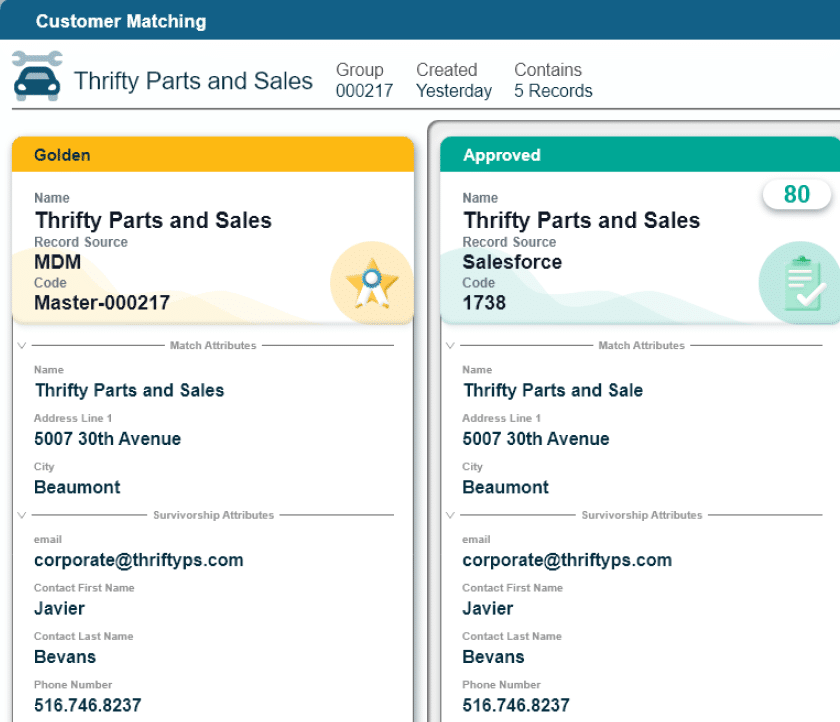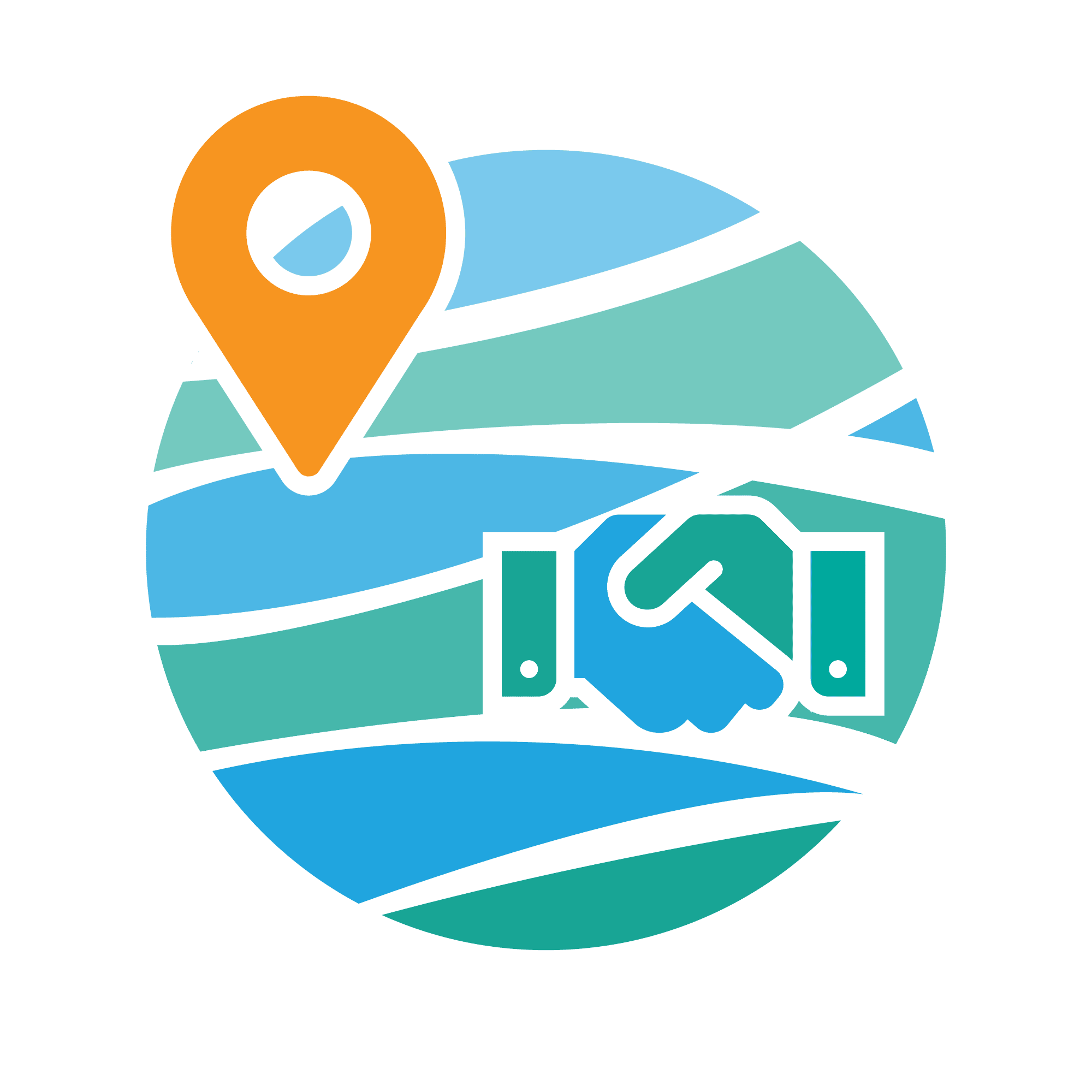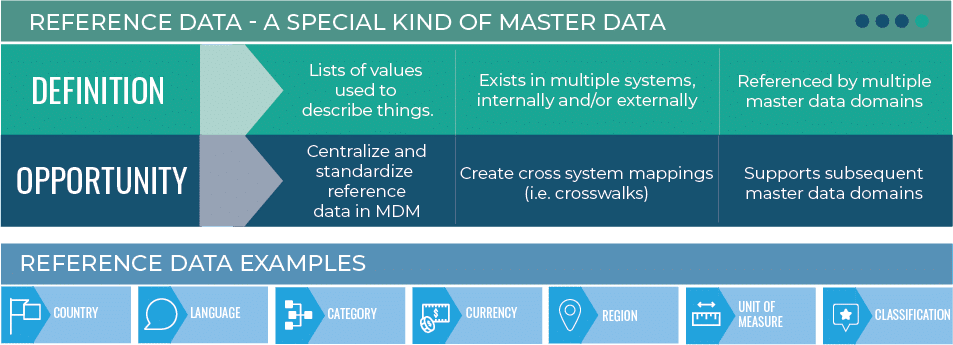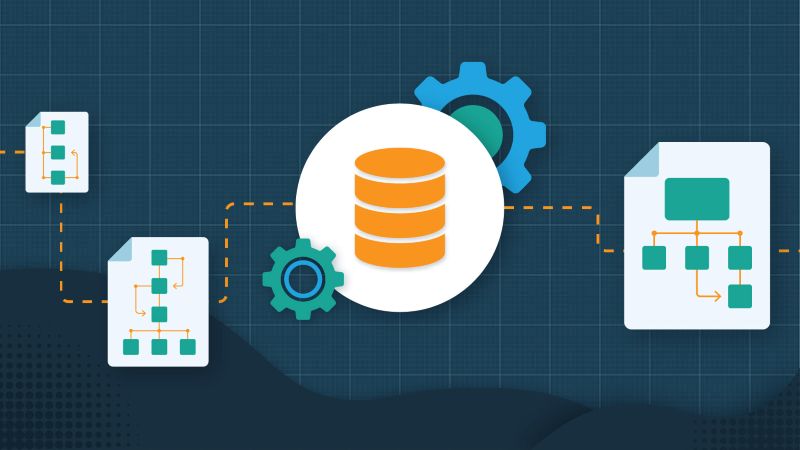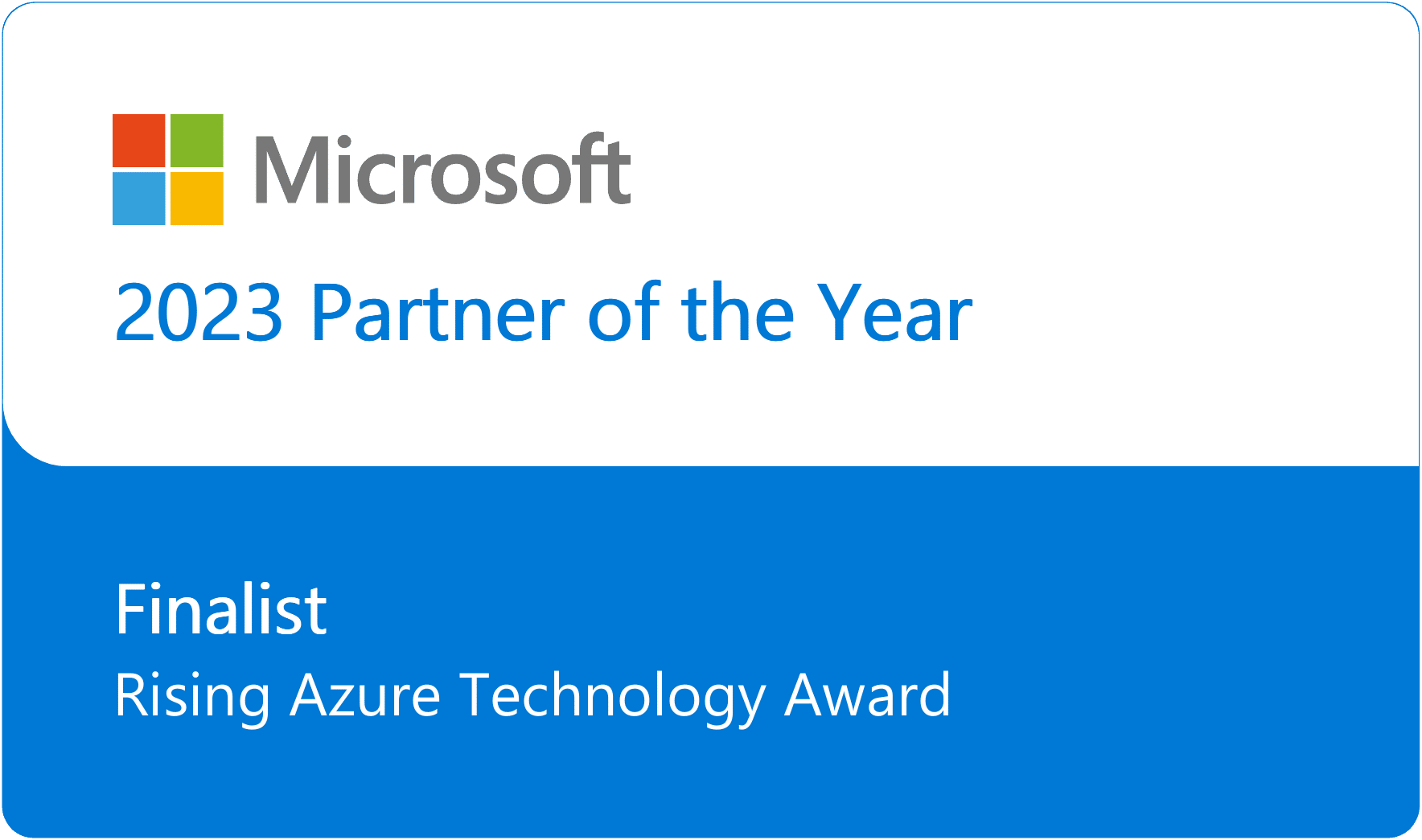If you’re considering a master data management (MDM) platform to improve data quality and unify data across your multiple systems, you may have heard of data domains or multidomain MDM.
Here, we explain just what multidomain is, the role it serves in your organization how it relates to other reference data throughout your enterprise. Be sure to watch the video above for an explanation and see our terminology overview below for key definitions and examples.
Traditionally, legacy MDM platforms were often purpose-built for a single type of data or domain. Each of these data domains is composed of different types of master data — or the core, non-transactional data used across the enterprise — like customers, products, supplier locations and chart of accounts.
For example, vendors would offer a Customer Data Integration (CDI) solution or Customer Data Platform (CDP) application that only managed customer master data.
They would then have to supplement that technology with a Product Information Management (PIM) solution to manage their product data and purchase additional, domain-specific applications for their industry or use case.
Moving from Single- to Multidomain Master Data Management
With this approach, organizations tackled each domain one by one with a “best-of-breed” application that specialized in the relevant data type. But over time, this approach resulted in greater complexity and a higher total cost of ownership — without the benefits of a single, integrated platform that could manage multiple domains and share metadata, reference data, business rules and other critical information.
But over the past several years, many vendors have begun offering multidomain MDM solutions.
This approach has been embraced by vendors and industry analysts as multidomain platforms enable organizations to implement any domain that they need within their enterprise using one set of tools and technologies.
But more than being a more flexible technological approach, multidomain MDM also empowers business users to manage and correct their data. By getting IT out of the business of fixing and correcting data issues, multidomain allows those closest to the data to manage business rules and ensure data quality.
Manage Customers, Products, Locations and More with Multidomain MDM
As organizations manage an increasing number of essential data types, these single-domain applications are limited in their ability to deliver value across an organization. According to a Profisee-sponsored survey by Harvard Business Review Analytic Services, 73% of business leaders say their organization uses six or more data types and nearly half (49%) use more than 10 different data types.
What’s more, 82% of respondents expect the number of different data types used in their organization’s business operations to increase over the next two years.
One of the most readily apparent benefits of multidomain is that users can use a single platform to implement any domain within their enterprise using a single set of tools and technologies.
Regardless of which domain that data stewards are actively managing, they can use a single common user experience. This makes hands-on data management more approachable, reduces the cost and complexity of training and allows organizations to scale MDM more easily to a larger audience.
This smaller technology footprint offers a more streamlined experience and reduces total costs. But more critically, it makes determining and following best practices more consistent across the enterprise. Rather than configuring multiple systems with different UIs and capabilities and hoping users consistently enforce data standards, multidomain MDM allows users across the organizations to benefit from the knowledge and best practices across the enterprise.
In addition to managing several data domains with the same UI and platform, multidomain MDM solutions let organizations share reference data across domains. This is critical, as reference data is rarely domain-specific and efforts to manage and maintain reference data have historically been duplicative across single-domain applications.
For example, an organization may maintain a list of languages in its product domain to meet the business need of listing product descriptions in several languages. Historically, the product management team would have maintained this information in a siloed PIM or another product-specific system.
That would have required the marketing and sales teams to maintain a separate, duplicative list of the native languages that each customer does business in. With multidomain MDM, however, data stewards can maintain a single list of languages as a reference data set and leverage it across the customer and product domains — as well as those source systems — much more seamlessly.
This reduces the hours spend reconciling data quality issues and allows organizations to benefit from a single source of truth across datasets. Organizations using multidomain MDM benefit from a simplified training and implementation process and can more broadly benefit from high-quality data across the organization, yielding a higher return on their overall investment.
Interested in learning more about multidomain master data management? Learn more about the Profisee platform or contact us so you can start on the path to building a trusted foundation of key enterprise data today.
Master Data Management Terminology Overview
| Transactional Data | Data about business events (often system transactions) that have historic significance or are needed for analysis by other systems. Transactional data are unit level transactions using the master data entities. Unlike master data, transactions are inherently temporal and instantaneous by nature. |
| Master Data | Master Data is the core data within the enterprise that describes objects around which business is conducted (e.g. material, customer, vendor, finance, employee, location, etc.). It typically changes infrequently and can include reference data / conditional data that is necessary to operate the business. Master data is not transactional in nature. |
| Reference Data | Reference Data represent a type of master data used to categorize other data or used to relate data to information beyond the boundaries of the enterprise. Reference data can be shared across master or transactional data objects (e.g., countries, currencies, time zones, payment terms, etc.). |
| Domain | A categorization, or grouping, of enterprise data business objects for the purpose of managing them in a coordinated way. Some examples of domains include customer, vendor, product, and employee; each is usually a main master file but may also be considered a domain where other business objects are logically grouped under the domain. |
| Master Data Management | Master Data Management (MDM) is the collection of processes and technology that ensures that master data is coordinated across the enterprise. MDM provides a unified master data service that provides accurate, consistent and complete master data across the enterprise and to business partners. |
Video Transcript
Click to expand
The next concept is Multi-Domain MDM. This is where over the past, 5 to 10 years, most vendors are turning towards. In the past, you had a lot of MDM solutions that were purpose-built for a single domain.
You have a Customer Data Integration or CDI solution that was purpose-built just for managing customer data. Then you had the PIM side which was Product Information Management that was focused purely on managing information about products.
A lot of organizations would go out, buy a CDI solution, a PIM solution, and then they might go out to buy other smaller solutions that are purpose-built for industry-specific domains, it’s much more of a best-of-breed by domain environment.
The trend of the last 10 years has been for vendors to move towards this concept of Multi-Domain MDMs. This is something that’s generally embraced by industry analysts, by vendors, as well as customers, and what everybody is looking for is one platform they can use to implement any domain that they need to within their enterprise, using one set of tools and technologies.
Multi-Domain and Domain Overview:
There are some definite benefits to this. The first one is that one of the goals of MDM is to drive stewardship out into the business. Start by getting IT out of the business of fixing and correcting data and enable the business to do that themselves.
If you’re able to implement a multidomain solution using one platform, all your data stewards — regardless of which domain they’re managing — can do that through one common user experience. It makes things more approachable, reduces the cost and complexity of training.
It allows you to really scale the solution out to a larger audience. There is also a smaller technology footprint, so you only must learn one set of tools and technologies, one platform to deliver, so it makes it easier for a given team to have full knowledge of the right way to do things and the best practices for a given platform. Whereas if you have multiple platforms, there’s obviously much more to learn, understand, and a higher likelihood of things being done not following best practices.
The other benefit is we talked a little bit about reference data. Reference data is oftentimes shared across domains.
One example could be a list of languages, and you could have in the product domain, a need to describe product descriptions in different languages. Language then becomes the reference data element that helps describe product descriptions.
Likewise, you could have for the customer domain, the need to store the native language of that customer that they do business in. If you have one Multi-Domain platform, you can maintain a single list of languages as a reference data set and leverage it across both of those domains more easily.
The net effect of all this is, if you can go with a multidomain MDM platform, we’re able to deliver lower total cost of ownership because you’re able to get some tailwind as far as understanding the technology, data stewards being able to grasp it more easily because they have one tool to learn, and that yields a higher return on your overall investment.
Other Blog Posts In This Series

Eric Melcher
Eric has spent the entirety of his 15+ year career working in the enterprise information management space. As Chief Technology Officer, Eric is responsible for all aspects of product management, development and support for Profisee’s software portfolio.
